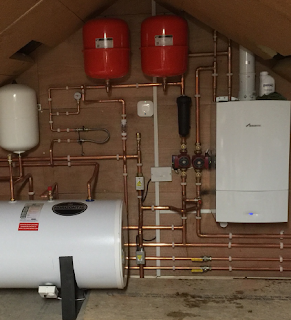A ductless mini-split installationBronx is probably perfect for you when you intend to add something which lacks any form of duct to your current system. For instance, it is possible to easily expand HVAC systems that use wood stoves, radiant heating grids, and warm water, oil, or gas space heaters. When you extend your business and residential space, where it is either impractical or just not feasible to build extensive ductwork or add spaces, it is also the perfect answer.
Advantages of mini split installation in the Bronx
The device is very versatile and allows you to independently cool or heat various zones. Each zone or space is based on its thermal management heating systems. This guarantees cost-effectiveness since the spaces used can be heated or cooled easily. Some systems are capable of managing up to four separate zones, all of which rely on a single external unit. Ultimately, different zones that can be adequately served are based on different individuals, including how well the different areas are insulated, and the final ambient temperature required.
The Bronx mini split installation system is very simple to install. You only have to attach the outdoor unit to the inner unit. A 3-inch gap in the wall to fit the duct is the outdoor unit. The makers of these systems typically have different connection lengths accessible. The outside unit can be positioned up to 50 feet away from the exhaust system. This ensures better usability, as the compressor can be tucked away, while the front view of the residential building or the home provides temperature control. Since you no longer have any ducts, you will not waste your money or lose electricity. It is a fact that ductwork is largely responsible for absorbing an additional 30 percent of the energy that should cool or heat every building's interior. When the ductwork is installed over areas that are not insulated, there is a risk of more failure. The additional advantage of remote-control operation comes from most of the versions. Turn the units on or off according to different rooms to suit your level of comfort as needed.
Numerous design choices apply to the mini-split installation Bronx. Put the internal air handlers on the roof, cover them, or position them on the wall within a lowered ceiling. Installation of units that will stand on the floor is also feasible. They're not going to take up too much space. Most of the modules are a little more than 6 inches thick and come with trendy and elegant wraps.
Disadvantages of mini split installation in the Bronx
A position for drainage that will occur around the external device also includes your ductless mini-split system. This is one of the numerous primary factors that an inexperienced installer normally neglects. As a result, the ductless mini split installation technique is also not common to different experienced contractors.
Final thoughts
Mini-split installation Bronx can be used to add the perfect temperature control and ambiance into your house. You just need to get the best suppliers and technicians to put it up. If you have any problem regarding the same, contact us now.






